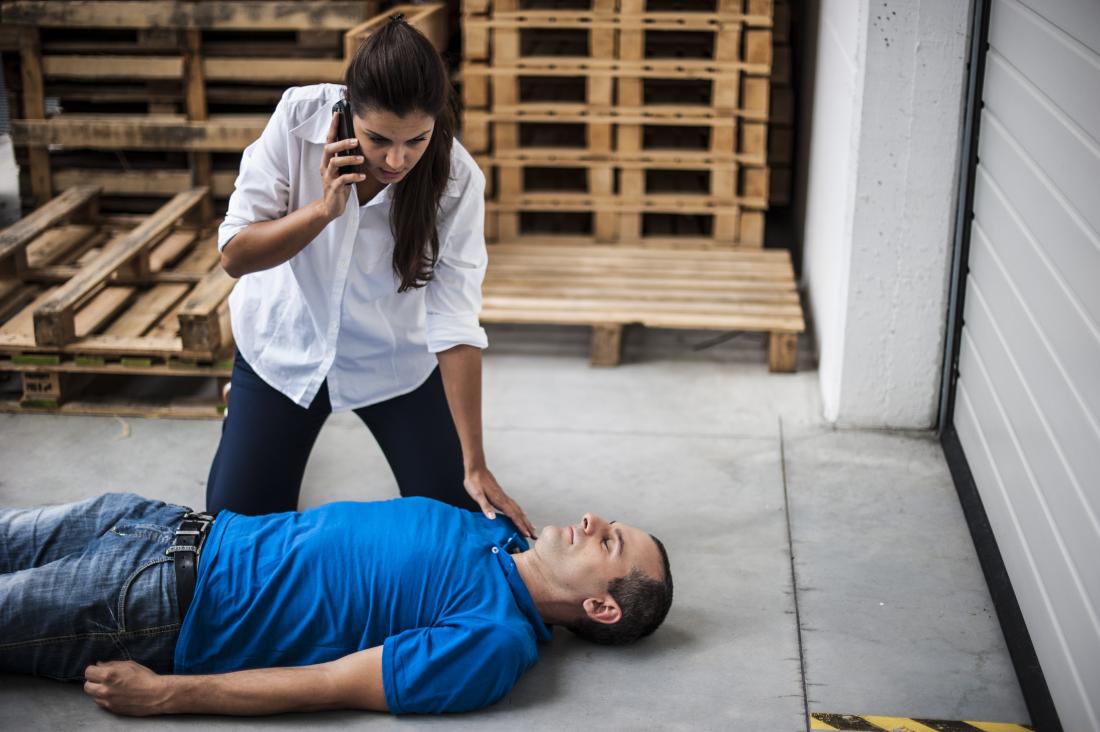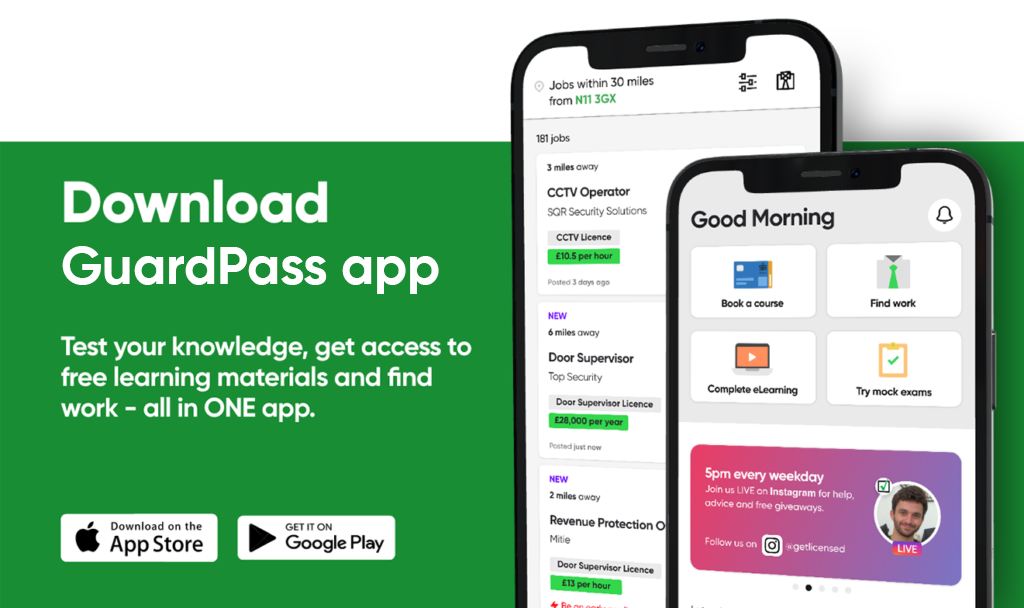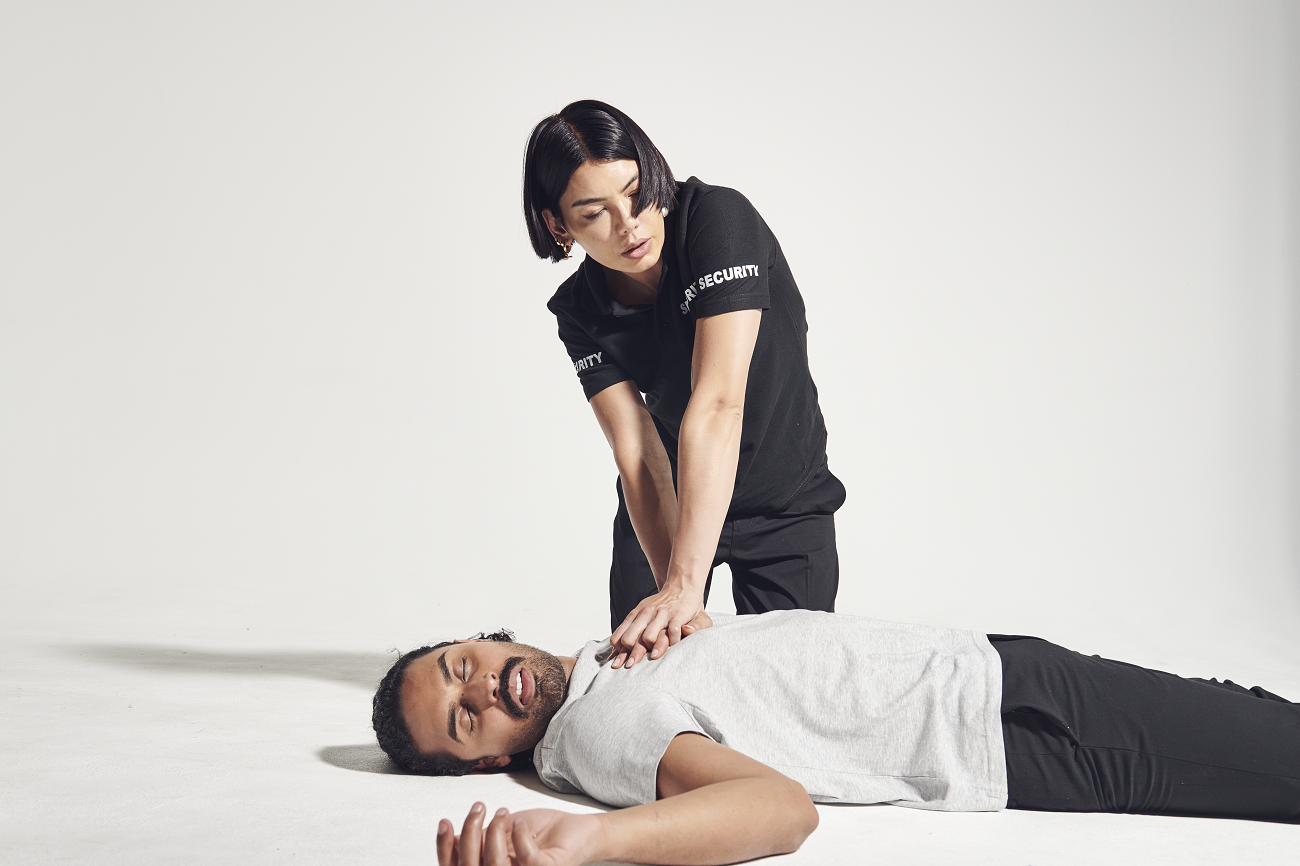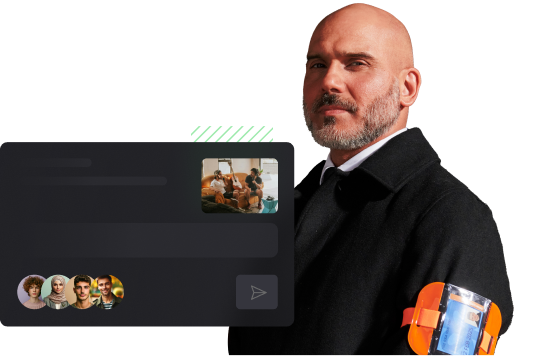Unconsciousness is a state which occurs when the ability to maintain an awareness of self and environment is lost, involving a complete or near-complete lack of responsiveness to people and other environmental stimuli.
It can last anywhere from a few seconds (e.g. fainting), or for longer periods of time, and is often caused by serious illness or injury, as well as substance abuse or alcohol consumption. Continue reading to find out what you should do in an emergency situation if an adult is unconscious and breathing.

1. Check for Danger
Your first step of action is to assess the situation. Checking for dangers to yourself and the casualty is vitally important. These potential dangers can come from your surrounding environment, such as traffic, water, animals or electricity, or even bystanders. It is important to consider your safety primarily – if you put yourself at risk and become a casualty, you will have ultimately aggravated the situation.
2. Check for Response
A response can usually be quickly established by the shouting at the casualty, or by gently shaking their shoulders. If possible, you should try and approach within the casualties’ line of sight. If a casualty is semi-conscious, whilst they may not be able to respond to you, they may still be able to hear you. In this case, it is essential to remain as calm as possible whilst letting them know who you are, and that you are there to help. If you appear to be panicking, the person will also feel inclined to panic, which can perpetuate the danger of shock.
3. Open the Airway
It is important to check that the airway of the casualty is clear. You can do this by placing one hand on the forehead and two fingers under the chin, gently tilting their head backwards. As you do this, the mouth will fall open slightly. If the person has been involved in a violent accident (e.g. a pedestrian hit by a vehicle), it is essential to be especially careful when doing this, as they may have sustained injuries to the neck or spine. Maintaining the opening of the airway is especially important, so that oxygen can travel through to the lungs.
4. Check Breathing
Place your ear next to the mouth of the casualty with your face towards their chest. Look, listen and feel for normal breathing – clear indicators of this include chest movement, sounds and breaths on your cheek. It takes 10 seconds to work out if a patient is breathing normally, as an adult will usually be breathing between 2 or 3 times within that period. If any foreign objects are found to be blocking the airway inside the mouth, they will need to be removed using latex or vinyl gloves – not your bare hands or fingers. This is in order to protect yourself against any infectious diseases that can be transmitted through body fluids. Gloves should be disposed of appropriately.
5. Recovery Position
If the casualty is breathing, and if they have no sign of spinal injury, put them into the recovery position until help arrives. This will keep their airway open, as it helps prevent the tongue from blocking the throat, and aids drainage. To do this, you should turn the casualty on their side, lift their chin forward in open airway position, and adjust your hand under the cheek as necessary. Check that they cannot roll forwards or backwards, and continue to monitor their breathing. If help has not arrived after 30 minutes, and if their injury allows for it, turn them on to the other side carefully.
6. Circulation
If the casualty is not breathing, their heart, even if it is beating is likely to stop fairly quickly. At this point you should call 999 for medical help as quickly as possible. Until help arrives, keep checking the casualty’s breathing. If the casualty is not breathing it is advised to go straight into chest compressions. To do this, you must take one hand, and place it on the centre of the chest. Interlock your hands, keeping them straight and kneel over the casualty. With your body, push down 5-6 cm, at a rate of 100-120 beats per minute. The compressions should not be stopped unless someone else takes over, if it is too dangerous to continue, the paramedics arrive, or if the casualty wakes up of their own accord.
*Whilst the information on this page offers guidance on common first aid situations, please note that this is not a substitute for First Aid training.*
How to work in the security sector
If you are interested in working in the security sector, whether it be as a Door Supervisor, Security Guard or CCTV Operative, you will need to obtain a SIA Licence.
To obtain a SIA Licence, you will need to complete a course. Once you have completed the course, will you then be able to apply for an SIA Licence and work in the security sector.
Looking for jobs?
Are you looking for a job? Find exciting opportunities on the GuardPass app. All you need to do is enter your area or your preferred job title to find your next big break!

The GuardPass App is available for download on the Apple App Store or on the Google Play Store.
For more tips, the latest security news and exciting prize draw campaigns, sign up above to receive emails and stay updated.








Leave a Reply